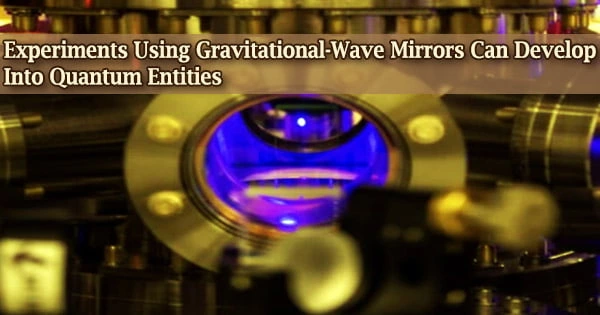Quantum physics investigations that investigate the motion of macroscopic or massive bodies under gravity forces necessitate noise isolation and very efficient sensing.
A highly reflecting mirror with monochromatic light that is photoelectrically detected with high quantum efficiency is an ideal system.
The quantum uncertainties of light and mirror motion interact, resulting in the observation of entanglement between optical and motional degrees of freedom in a quantum optomechanical experiment.
Researchers from Hamburg University in Germany discuss research on gravitational wave detectors as a historical example of quantum technologies and examine fundamental research on the connection between quantum physics and gravity in AVS Quantum Science, co-published by AIP Publishing and AVS.
For observing the minuscule space-time oscillations at audio-band frequencies and below, gravitational wave astronomy demands unparalleled sensitivity.
The mirror perceives only the light, and the light only the mirror. The environment is basically not there for the two of them. Their joint evolution is described by the Schrödinger equation.
Roman Schnabel
Recent gravitational wave tests have shown that massive structures, such as a 40-kilogram quartz glass mirror reflecting 200 kilowatts of laser light, may be shielded from powerful thermal and seismic impacts, allowing them to evolve as one quantum object.
“The mirror perceives only the light, and the light only the mirror. The environment is basically not there for the two of them,” said author Roman Schnabel. “Their joint evolution is described by the Schrödinger equation.”
This decoupling from the environment, which is at the heart of all quantum technologies, including the quantum computer, allows for measurement sensitivities that would be unattainable otherwise.
The work of Nobel Laureate Roger Penrose on researching the quantum behavior of enormous things connects with the findings of the researchers. Penrose wanted to know more about the relationship between quantum physics and gravity, which is still a mystery.
Penrose came up with the idea of using radiation pressure to connect the light to a mechanical mechanism. While these fundamental physics concerns remain unanswered, the highly insulated coupling of huge devices that reflect laser light is beginning to improve sensor technologies, according to researchers.
Researchers will likely look into further decoupling gravitational wave detectors from environmental factors in the future. Decoupling quantum devices from any thermal energy exchange with the environment, in general, is critical. Quantum measuring devices and quantum computers both require it.





